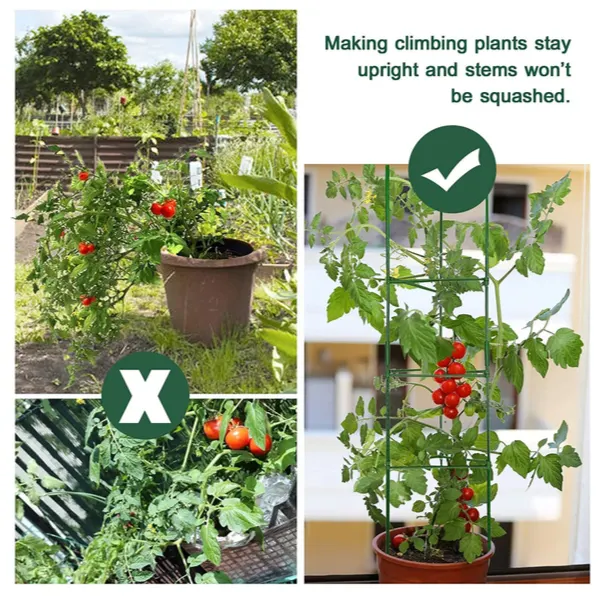Believe it or not, one of the best ways to help your tomato plants grow healthy and strong is to give them the best support possible – right from the first day you plant your crop!
Tomato plants are certainly one of the vegetable plants in a garden that need good support. They are a fast and wild grower once they take hold. Because of this, as their branches begin to fill with heavy fruit, they can easily crack, snap, or break off from the excessive weight.
Unfortunately, when that happens, the issue of lost fruit is not the only problem. When branches begin to crack or fail entirely, the tomato plant diverts resources to help the injuries heal.
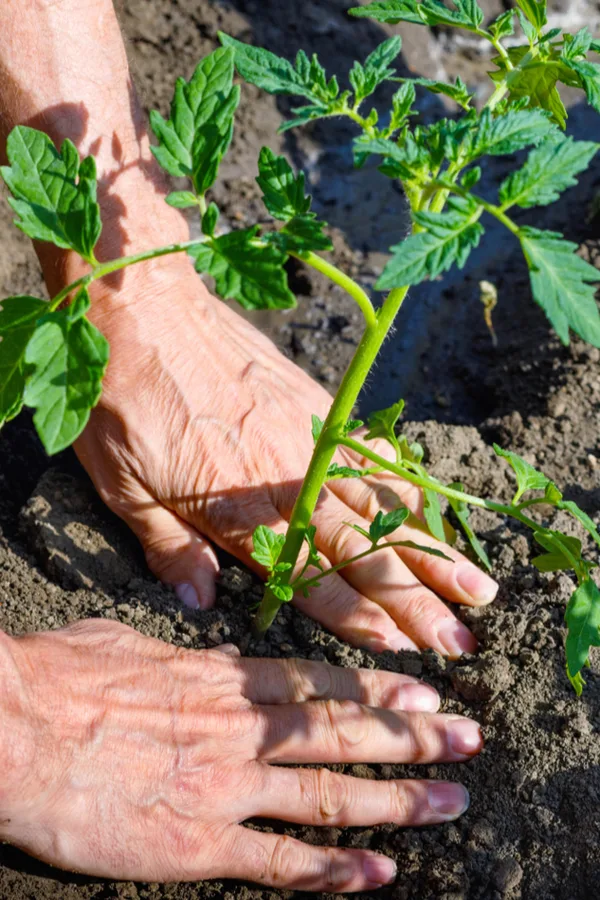
Using those resources for repair takes valuable energy away from where its needed most – to produce new fruit and ripen existing tomatoes on the plant. But that is not the only issue. Damaged and broken limbs also open up the door for pests and disease.
Branches that have toppled to the ground are easy prey for insects and animals to snack on the fruit. Even more, as a plant weakens, it also becomes an easy target for disease to take hold.
Why Early Support Is Vital – How To Best Support Tomato Plants
All of the above issues are exactly the reason your tomato plants need support. But just as important is to get your supports in early in the growing season, and there are several reasons why.
First and foremost, supporting your tomato plants early helps protect them when they need it most. Small, tender transplants can easily be whipped by the wind or a strong spring storm.
But by simply tying off the single main stem of a newly planted tomato, the plant can handle those issues with ease. (See : How To Tie Off Tomato Plants With Ease)
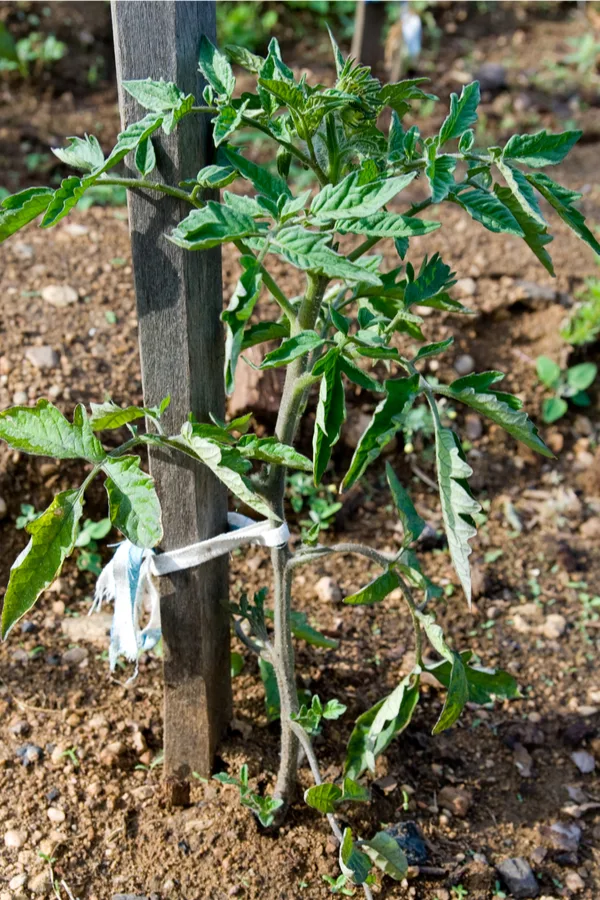
There is, however, another very important reason to put your tomato supports in the day you plant – and it has to do with the long term impact of your tomato plant’s roots.
The roots of a tomato plant are its biggest key to success. They bring in nutrients, air and water to the plant. It is all very simple. The more vibrant the roots of your tomato plant are, the healthier and more productive the plant will be.
Keeping Your Tomato Plant’s Roots Healthy – How To Best Support Tomato Plants
Unfortunately, if you wait until your tomato plants are growing larger to drive in your supports, you risk damaging those roots. Once again, the plant will use its resources to attempt to heal the damage in place of growing more tomatoes.
But even more, by waiting until later in the season to support your crop, your risk compacting those roots with your feet as you install the supports.
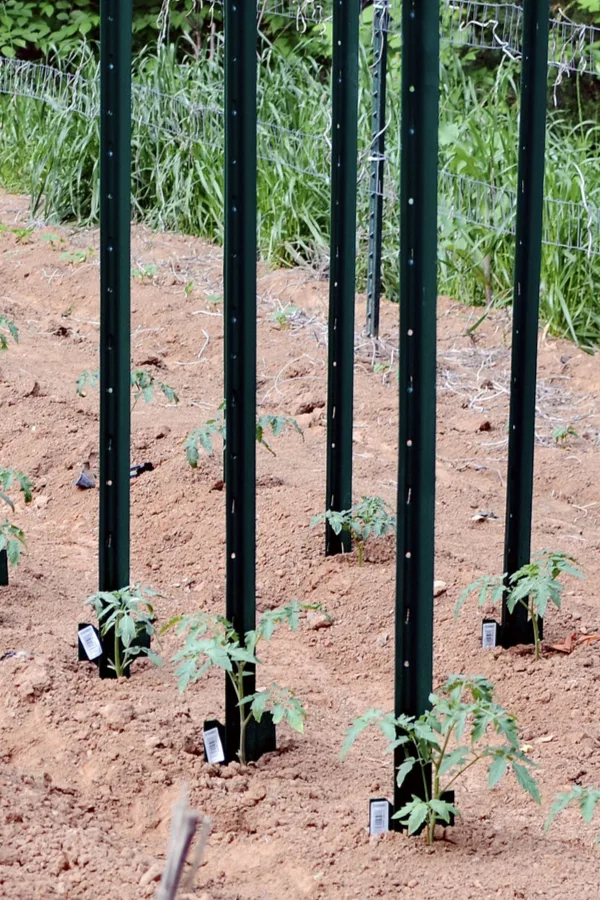
Foot traffic around the base of your plants can be devastating to its root structure. As roots are compressed under the weight of foot traffic, the soil compacts all around them. As it does, it suffocates the roots. This makes it harder for them to draw in the moisture and nutrients they need.
The more loose and undisturbed the soil around your plant remains, the stronger your plant will be. And messing around trying to put supports in the ground mid-season is one of easiest ways to destroy good soil structure.
The Best Ways To Support Your Tomato Plants – And A Few To Avoid
Now that we have covered the “Why & When” of supporting tomatoes, lets take a look at some of the best methods to employ to reinforce your plants.
For years stakes and small round cages have been the go-to for providing support. Although they certainly can work, both have a few disadvantages that make them less than desirable for use.

With stakes, they simply can be difficult to use. A single point of contact just isn’t enough support to hold up the many branches of a tomato plant. Especially in mid-summer when many heirloom tomatoes grow massive.
If that isn’t enough of a deterrent for the staking method, there is attempting to tie off branches. First off, tying a tomato limb off to a stake be difficult. But it can be even harder to get the tie to stay up on the stake!
As for the small tomato cages, they simply are not strong enough to stay in the ground all season long. If you have ever used one, you have probably had the experience of having your little cage grow out of the ground!
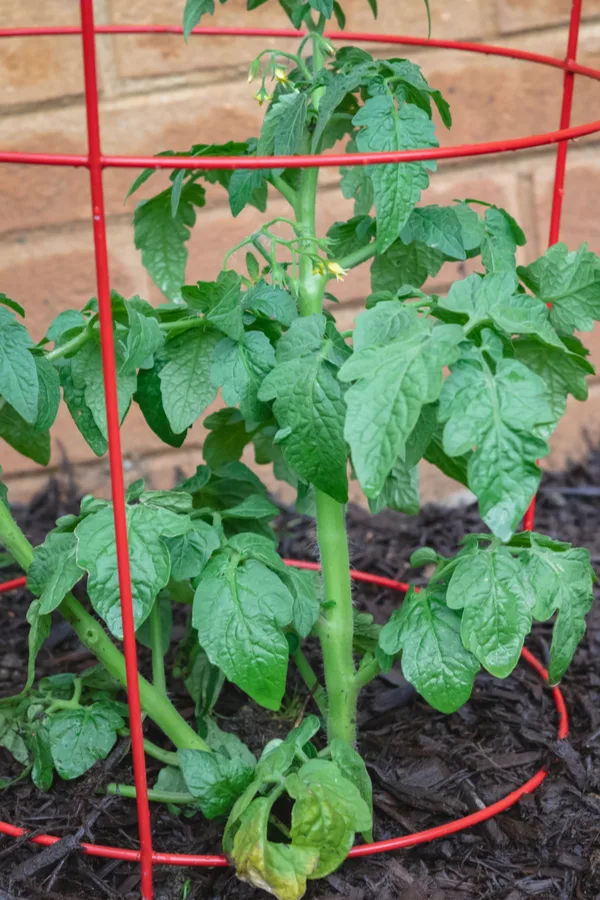
Finally, those cylindrical cages can be incredibly difficult to pick through. There is nothing worse than seeing the perfect tomato inside the cage, and not being able to get to it!
So if stakes and small cages aren’t the answer, what is? Here is a look at 3 methods that work wonders to hold up the biggest of tomato crops!
3 Great Ways To Support Tomato Plants
Stake-A-Cage Method
The Stake-A-Cage method is one we have been employing on our Old World Garden farm for years. They are easy to make, inexpensive, and best of all, make tying up and harvesting a breeze.
The method uses the combination of a simple stake and a piece of an open fence panel. It create a strong support that can hold a wide portion of the plant.
Simply drive in a wood or metal stake behind the plant. Next, you attach a 12 or 18″ wide panel to the post with zip ties or string. We use 5′ high panels for our large plants, and 3′ high panels for our smaller tomato varieties.
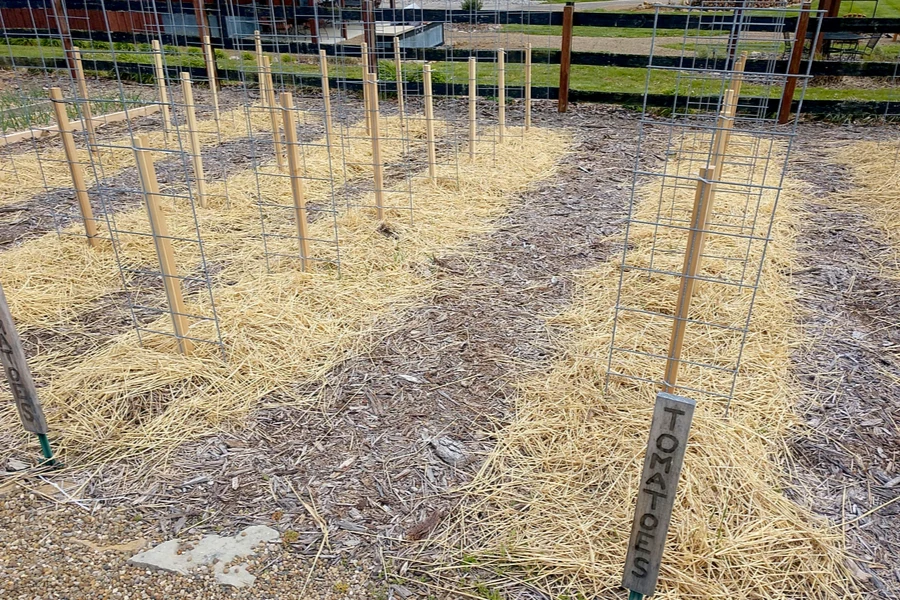
As the plant grows, you simply tie off branches to the fence panels. The open design makes for easy access. Both for tying up plants, and for harvesting tomatoes! (See: How To Create Your Own Stake-A-Cage Supports)
Cow Fence / Goat Fence Panels
Another option is to use full length goat, cow or even rabbit fencing panels down the length of your rows. The panels can be secured with a couple of stake and multiple plants can be tied up to the panel.
The strength of this method is amazing. And much like the Stake-A-Cage method, it makes tying off branches and harvesting an easy task.
The panels can be a bit pricey up front, but most will last a lifetime. Especially if you purchase galvanized panels that are rust resistant.
DoCred Tomato Cages
If you are looking at purchasing tomato supports, especially for container or smaller tomato plants, one of our favorites is the DoCred Tomato Cage system.
One of the best things about this set is that you can create it into cages or even a vertical trellis. Each stake has a steel core inside of a heavy-duty plastic coating.
The supports are great because they can be modified to your needs. Even better, because of their construction, they are built to last for multiple years of use. Product Link : DoCred Tomato Cage System
No matter which option you choose, remember to get those supports in early! Here is to supporting your tomato crop this year, and to having a bountiful harvest!
Follow Our Facebook Page For Great Gardening Tips And Advice! This Is My Garden Facebook Page
This Is My Garden is a garden website created by gardeners, for gardeners. Jim and Mary Competti have been writing gardening, DIY and recipe articles and books and speaking for over 15 years from their 46 acre Ohio farm. They publish three articles every week, 52 weeks a year. Sign up today to follow via email, or follow along!


